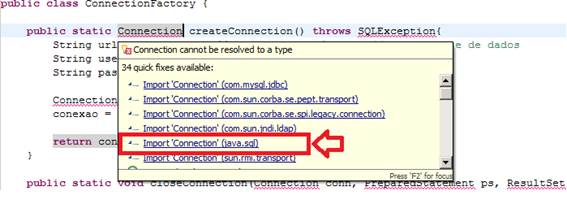

- MYSQL JDBC CONNECT HOW TO
- MYSQL JDBC CONNECT DRIVERS
- MYSQL JDBC CONNECT DRIVER
- MYSQL JDBC CONNECT CODE
This method is suitable as it allows you to make the driver registration configurable and portable. The most suitable approach to register a driver is to use Java’s forName() method to dynamically load the driver’s class file into memory, which automatically registers it. There are 2 approaches to register a driver. Register JDBC Driver: In this step, JVM to loads the desired driver implementation into memory so that it can fulfill the JDBC requests. Import JDBC Packages: Add import statements to your Java program to import required classes in your Java code. Now let’s move further and understand JDBC Connections. If you wish to know more about types of JDBC Driver, you can refer to this article on JDBC Drivers.
MYSQL JDBC CONNECT DRIVERS
It will send queries and update statements to the data source.įor example, JDBC drivers help you to open a database connection to interact with it by sending SQL or database commands. Establishes a connection with a data source.Ģ. Essentially, a JDBC driver does three things and they are as follows:ġ. JDBC drivers are used to implement the defined interfaces in the JDBC API, for interacting with the database server.

Now let’s move further and understand various JDBC Driver Types JDBC Driver Types So this is how you can establish a connection to the database and insert values in the tables. Sql= "INSERT INTO Employees VALUES(103, 'Linkin', 'Park', 28)" Sql= "INSERT INTO Employees (102, 'Taylor', 'Swift', 30)" Sql = "INSERT INTO Employees VALUES (101, 'Enrique', 'John', 25)"

String sql ="INSERT INTO Employees VALUES (100, 'Kriss', 'Kurian', 18)"
MYSQL JDBC CONNECT CODE
Rest of the code remains the same as above. I will be writing the code only for step 4. To insert the values in the created database, you can refer to the below code.

Sql = "SELECT id, first, last, age FROM Employees" Ībove code creates a table in your localhost database. ("Connecting to database.") Ĭonn = DriverManager.getConnection(DB_URL,"root","") Static final String DB_URL = "jdbc:mysql://localhost/emp" Ĭlass.forName(".jdbc.Driver") Now as you have seen various steps involved to create a JDBC Application, let’s see an example code to create a database and establish a connection. Open a connection: Here, you can use the getConnection() method to create a Connection object, which represents a physical connection with the database.Įxecute a query: This actually requires to use an object of type Statement for building and submitting an SQL statement to the database.Įxtract data from the result set: It is suggested that you use the appropriate getXXX() method to retrieve the data from the result set.Ĭlean up the environment: Here, it is essential to explicitly close all database resources versus relying on the JVM’s garbage collection. Register the JDBC driver: Here you have to initialize a driver so that you can open a communication channel with the database. Most often, using import java.sql.* will suffice. Import the packages: You need to include all the packages that contain the JDBC classes needed for database programming. In order to create a JDBC Application, you need to follow a few steps. Now let’s move on to the next topic and look at the steps required to create a JDBC Application. The connection object deals with the communication functions of the database. It also abstracts the details that are associated while working with Driver objects.Ī Connectionis an interface that consists of all the methods required to connect to a database. The Driver is an interface that handles the communications with the database server. The driver that recognizes a certain sub-protocol will be used to establish a database Connection. The JDBC API provides the following interfaces and classes −ĭriverManager: This is mainly used to manage a list of database drivers. It is similar to the Open Database Connectivity (ODBC) provided by Microsoft.įor a better understanding of working of JDBC, let’s dive deeper into the topic and understand the architecture that lies behind Java Database Connectivity. With this, you can update, save, fetch and delete the data from the databases. JDBC API can be used to access tabular data stored in any relational database. This mainly involves opening a connection, creating a SQL Database, executing SQL queries and then arriving at the output. This API lets you encode the access request statements, in Structured Query Language (SQL ). JDBC is one of the standard Java API for database-independent connectivity between the Java programming language and a wide range of databases.
MYSQL JDBC CONNECT HOW TO
In this article, I will tell you how to connect to a database and execute queries using JDBC.īelow topics are covered in this article: It helps us to connect to various databases through JDBC (Java Database Connectivity). Java, being one of the most prominent programming languages, provides extensive support to databases.


 0 kommentar(er)
0 kommentar(er)
